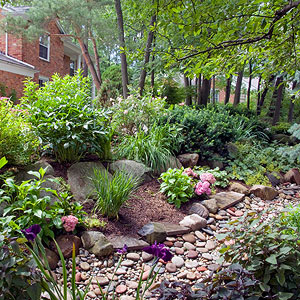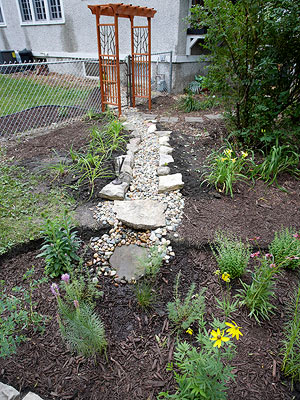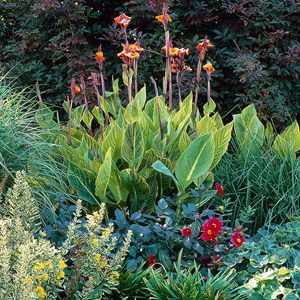

Many landscape spots used to be covered in grass, scrub, and forest, but as metro areas have grown, those have been replaced by homes, patios, driveways, and other hard surfaces. Those hard surfaces prevent water from slowly seeping into streams and underground aquifers. What is a rain garden? It’s one solution to those types of drainage problems. Rain gardens are both beautiful and practical: They filter rainwater runoff and provide a home to birds and butterflies. Plus, they’re easy to maintain. Here’s how to make a rain garden in six easy steps.
Use your rain garden to manage runoff in an urban garden — and find even more inspiring city landscape tips.
continue reading below

Choose the Right Site for Your Rain Garden
Take a good look at your yard: You’ll need a low spot or depression that’s at least 10 feet from your house in order to make a rain garden.
Clay soils work best to make a rain garden because they slow the percolation of water, holding water while allowing it to slowly drain. If you are unsure of the type of soil you have, complete a soil test, which can usually be done for a small fee through your state’s extension service. If your test indicates sandy soil, you will need to add water-absorbing compost and topsoil to the rain-garden area.
Learn more about soil testing.
Select Rain-Garden Suitable Plants
As you make a rain garden, stick to plants that can tolerate wet sites. Many native plants work best, and seedlings are easier to establish than direct-sown seed when you are going to make a rain garden so you don’t have to worry about the seed washing away. For that reason, native plant plugs work better than seeds. Also try to use native grasses, sedges, and rushes in at least one-third to one-half of the rain garden. Those plants possess extremely deep root systems.

To make a rain garden, other good plant choices include marginal plants. These plants typically grow near the margin, or edge, of a pond, and tolerate both extremes of moisture: They thrive in soggy soil but are content in dry spells too, bouncing back when water becomes available again. Those plants include ‘Bengal Tiger’ canna, scarlet rose mallow, yellow flag iris or Siberian iris, cardinal flower, and obedient plant.
Learn more about cannas.
Learn more about rose mallow.
Learn more about iris.
Learn more about cardinal flower.
Learn more about obedient plant.
Planting Ideas for Rain Gardens
As you choose plants to make a rain garden, consider planting in larger drifts for best overall impact. Also provide different types of foliage and texture as well as color; one good plant to consider is red osier dogwood.
In the final step to make a rain garden, arrange your plants, spacing according to label directions. Water well and mulch.
SOURCE:http://www.bhg.com/gardening/landscaping-projects/landscape-basics/make-a-rain-garden/